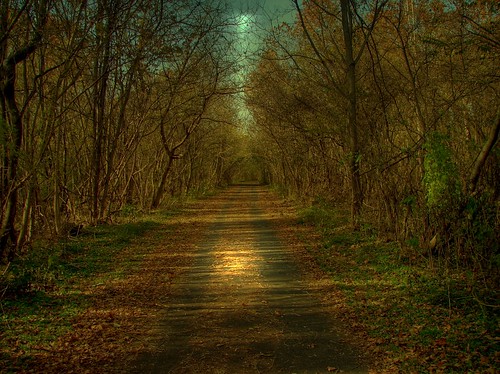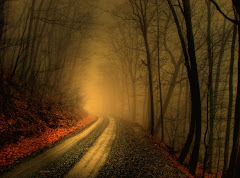
Unfortunately pictures even copyrighted pictures are often taken and used by profit by those who do not have permission to do so. This has happened to me and I am sure perhaps to you. So what can you do to protect your images?
1. Be sure and copyright your images: I suggest you make sure that you use the full copyright protection. If you use Flickr you can choose full copyright when you upload your photos.
I realize that there are lesser forms of protection like creative commons. There is much discussion in favor of creative commons, but you should realize that this opens the door for free use of your photographs without regard to your wishes.
If your picture has value and you offer it free you are not only hurting yourself, but everyone else who would wish to sell their photographs by devaluing the market as a whole. '
If you want to let someone use your photo for free for whatever reason you can grant that if your picture is fully protected. With full copyright protection, you always have this option. At times I have offered my photos free to non profit organizations or for causes I support.
2. Use Photo protection: If you use photo sharing sites like Flickr use the deepest level of protection the site offers. You can do this through the options you can select in your account.
Also consider only using a medium sized image viewable to the public. While security options can be defeated, this does offer a level of protection that you should utilize.
3. Read the TOS: TOS is short for Terms of Service. Most legitimate sites where you may post your photos has a link to the TOS on the bottom of their web page.
Be sure you are not granting rights for the site to sell you photographs to the public or to their affiliates. Generally, most ethical sites will not do this.
There are exceptions, and you should be fully aware of how a site may use your photos. Be wary if you read you are granting the site a license to use the photo in whatever manner they choose.
I personally do find it acceptable if the site wants to use your photo for promotion on their website.
Also, be wary of photo contests that want full licensing or even relinquishing of the copyright if you submit a photo to their contests. Your photograph may not win the contest and you might find it being used for profit through their company or affiliates. Here is example of what happened on one of these contests by Capital One.
TOS can be confusing, but it is up to you to know what you are giving up when you enter a contest or submit a photo to a site.
4. Periodically search your for photos: This might not be 100 percent effective in finding misuse of your photos, but it is a useful tool. Google Similar Images is a beta program that allows you search for similar photos like yours, and perhaps you will find yours. There are sites that will use your images for profit without your permission and this is one way to find those sites.
UPDATE: One of the best tools for finding your photos online has been released in beta: It is called TinEye. I have used this search on one of my photos and it turned up six occasions when someone has used the photo claiming it was theirs. As TinEye moves from Beta it will offer even a larger data base for finding your photos even if they have been altered. This is really a great tool.
What I personally allow is use of my pictures of web resolution only with a link back to my original picture. Use of my photos with a link back I consider a good promotional tool.
5. One thing to do if your photos are stolen; If you find you photos where illegally taken off a sharing site like Flickr and put up for sale on another site. Contact your sharing site immediately. If it is Flickr send an abuse report.
I have found that most theft through Flickr happens through use of their API. If someone has abused the API according to their TOS they are quick to act. Other photo sharing sites would also respond quickly also.
6. Confront the abuser: This can result in varied responses. In most cases the abuser will remove your photo. Often times the abuser has acted out of ignorance and will remedy the situation to your satisfaction.
However if you do not get satisfaction, it is time to consider demanding payment or hiring a copyright attorney. To understand copyright protection here is what you need to know.
7. Do not over react: Whenever you find an image of yours being used, be sure to check if it is being used for profit by the site in question. As I stated earlier I allow people to use web resolution photos of mine if they provide a link back.
This can work in your best interest in promoting your photos for sale, by expanding the audience base. I allow this even without providing permission.
Also, when you join sharing sites or enter contests realize that limited licensing of your photos are appropriate. You must way the value to you in allowing limited use of your photos. I tend to allow this unless the licensing is far ranging.
Every grant of rigthts should be carefully considered when you read the TOS on the site. When you do find misuse of your photos I would suggest to try to talk first to resolve the issue. But if resolution is not achieved a stronger approach may be necessary.
8. Finding your photos on publications: I have at times found my photos on publications used without my permission. In each case I have successfully resolved the issue through communication with the publication and reaching a fair sum for compensation. I have yet had to file a copyright infringement suit, but if necessary I would. My rule of thumb is to talk first, but if needed do not rule out legal action.
9. Using photo sharing sites: One of the main advantages of using photo sharing sites like Flickr that the copyright notice is applied to your photograph as soon as it is published. It not only protects your photograph it provides a timeline that few can dispute. Any photo posted later by another and attempted to be copyrighted can be sucessfully disputed by which one came first.
10. Use a watermark: I use watermarks on all of the photos I post to Smugmug. I do not do this with Flickr although it could be helpful. Watermarks can be cloned out but takes some effort. On Flickr I have only low resolution pictures available that are only of web resolution.
TOS can be confusing, but it is up to you to know what you are giving up when you enter a contest or submit a photo to a site.
4. Periodically search your for photos: This might not be 100 percent effective in finding misuse of your photos, but it is a useful tool. Google Similar Images is a beta program that allows you search for similar photos like yours, and perhaps you will find yours. There are sites that will use your images for profit without your permission and this is one way to find those sites.
UPDATE: One of the best tools for finding your photos online has been released in beta: It is called TinEye. I have used this search on one of my photos and it turned up six occasions when someone has used the photo claiming it was theirs. As TinEye moves from Beta it will offer even a larger data base for finding your photos even if they have been altered. This is really a great tool.
What I personally allow is use of my pictures of web resolution only with a link back to my original picture. Use of my photos with a link back I consider a good promotional tool.
5. One thing to do if your photos are stolen; If you find you photos where illegally taken off a sharing site like Flickr and put up for sale on another site. Contact your sharing site immediately. If it is Flickr send an abuse report.
I have found that most theft through Flickr happens through use of their API. If someone has abused the API according to their TOS they are quick to act. Other photo sharing sites would also respond quickly also.
6. Confront the abuser: This can result in varied responses. In most cases the abuser will remove your photo. Often times the abuser has acted out of ignorance and will remedy the situation to your satisfaction.
However if you do not get satisfaction, it is time to consider demanding payment or hiring a copyright attorney. To understand copyright protection here is what you need to know.
7. Do not over react: Whenever you find an image of yours being used, be sure to check if it is being used for profit by the site in question. As I stated earlier I allow people to use web resolution photos of mine if they provide a link back.
This can work in your best interest in promoting your photos for sale, by expanding the audience base. I allow this even without providing permission.
Also, when you join sharing sites or enter contests realize that limited licensing of your photos are appropriate. You must way the value to you in allowing limited use of your photos. I tend to allow this unless the licensing is far ranging.
Every grant of rigthts should be carefully considered when you read the TOS on the site. When you do find misuse of your photos I would suggest to try to talk first to resolve the issue. But if resolution is not achieved a stronger approach may be necessary.
8. Finding your photos on publications: I have at times found my photos on publications used without my permission. In each case I have successfully resolved the issue through communication with the publication and reaching a fair sum for compensation. I have yet had to file a copyright infringement suit, but if necessary I would. My rule of thumb is to talk first, but if needed do not rule out legal action.
9. Using photo sharing sites: One of the main advantages of using photo sharing sites like Flickr that the copyright notice is applied to your photograph as soon as it is published. It not only protects your photograph it provides a timeline that few can dispute. Any photo posted later by another and attempted to be copyrighted can be sucessfully disputed by which one came first.
10. Use a watermark: I use watermarks on all of the photos I post to Smugmug. I do not do this with Flickr although it could be helpful. Watermarks can be cloned out but takes some effort. On Flickr I have only low resolution pictures available that are only of web resolution.






Nice post - copyright pictures ..Keep Posting
ReplyDeleteRon
copyright pictures